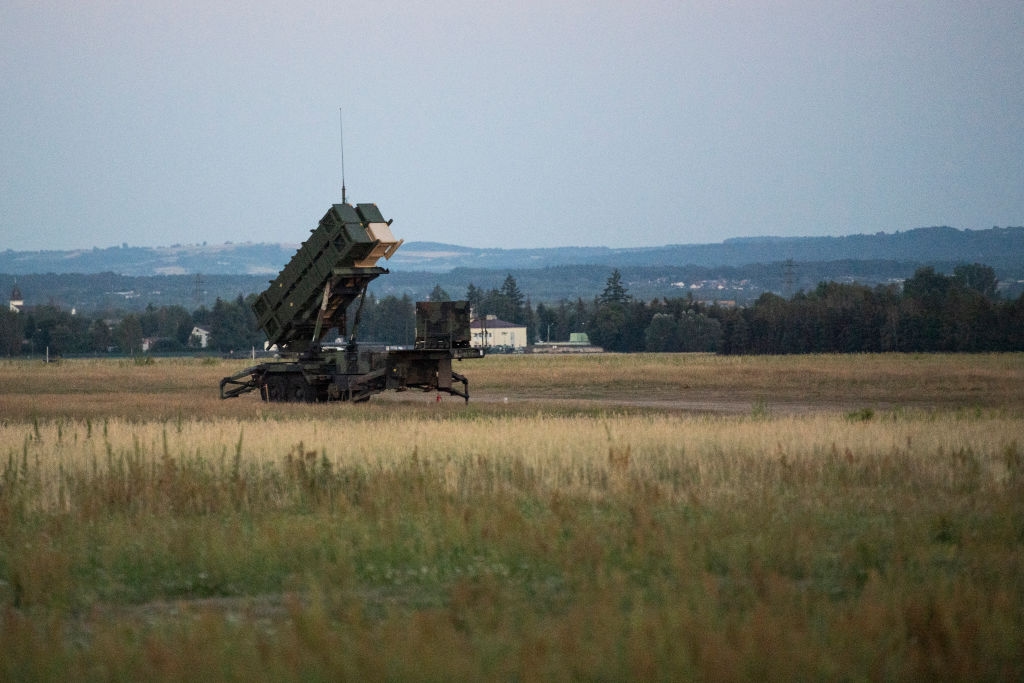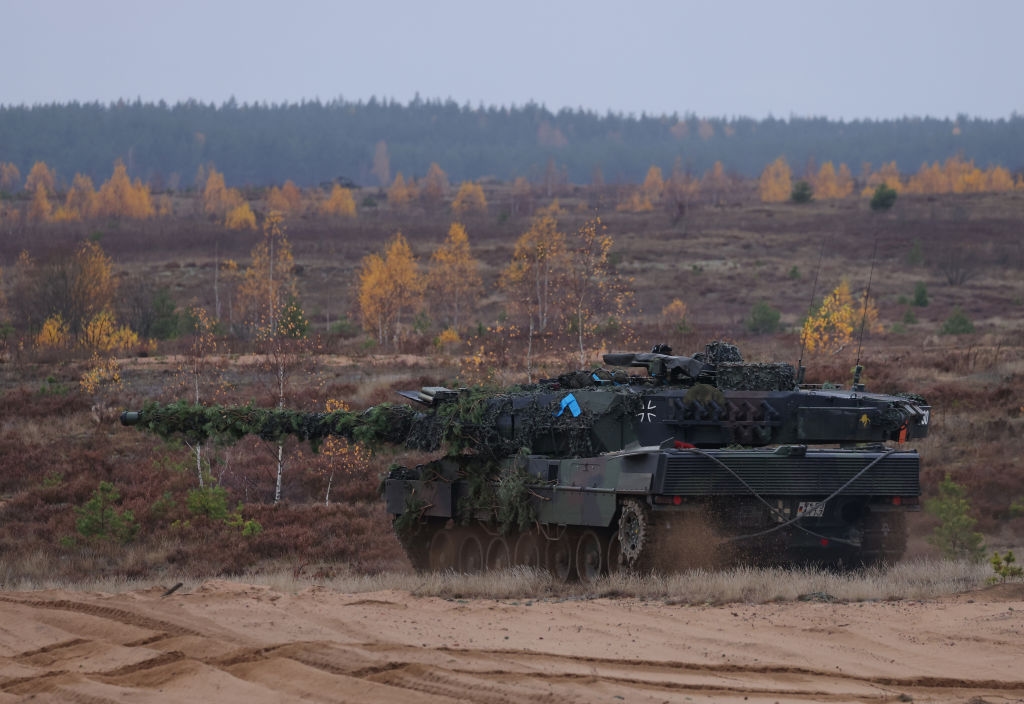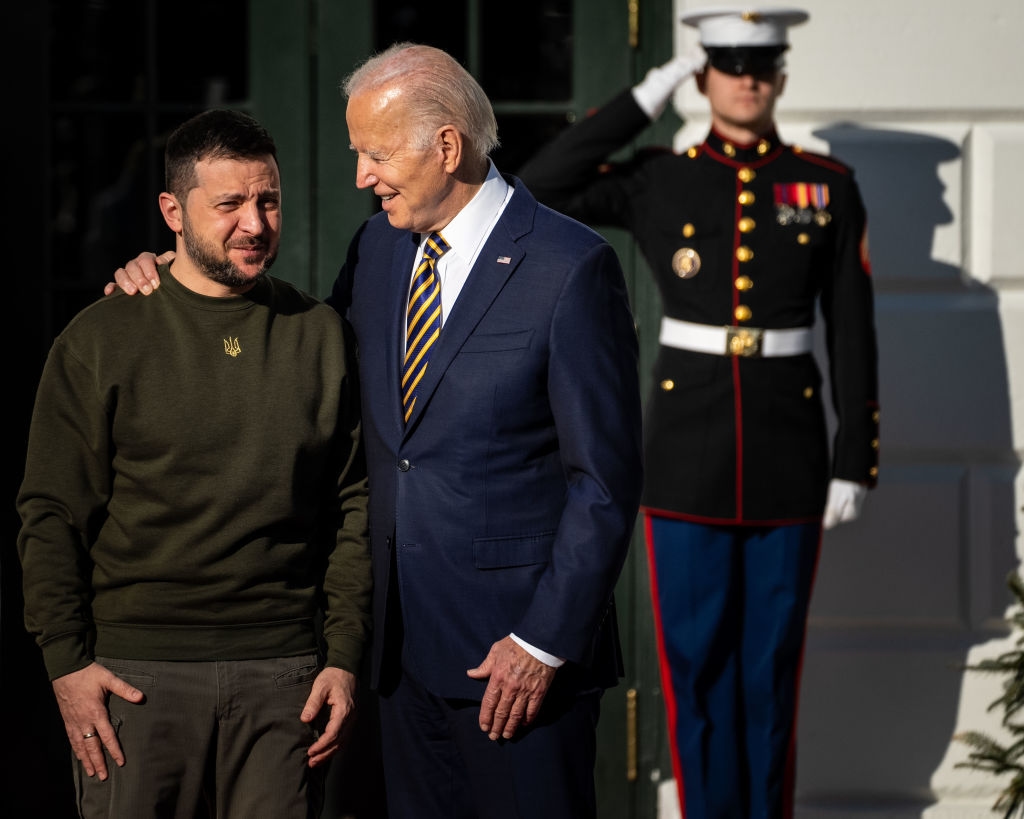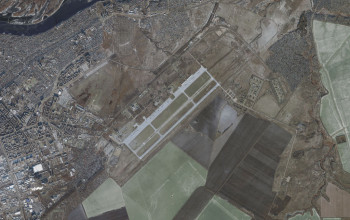This holiday season, as people celebrate with their families and stroll brightly-decorated streets across the world, Russia's war against Ukraine has reached a crucial point.
Ukraine's autumn campaign has been a resounding success, with counteroffensives in Kharkiv, Donetsk, and Kherson oblasts liberating thousands of square kilometers of territory.
More importantly, these victories have proven to Ukraine's partners that the Ukrainian military has not only the will to win, but the ability to conduct effective combined arms offensives on the ground.
Russia, however, is still a very long way from being out of the fight.
Moscow's withdrawal from its untenable position on the west bank of the Dnipro River around Kherson freed up some of its most capable units to defend a much shorter front line.
Strategically, new counteroffensives along the front lines in Luhansk and Zaporizhzhia oblasts are the obvious next steps for Ukraine, cutting off logistics routes and bringing new territories into fires range.
Knowing this, Russia is digging in, building new lines of defense intended to make new Ukrainian advances as difficult and costly as possible.
Around the key front-line cities of Bakhmut and Avdiivka in Donetsk Oblast, Russia remains on the offensive – hardly a sign of a military on its last legs.
Here, Ukrainian forces are defending fiercely, and the result of these battles is far from preordained. Backed by relentless artillery and mortar fire, Russian forces are nonetheless making incremental gains on the flanks of both cities.
Meanwhile, Ukrainian Сommander-in-Сhief Valerii Zaluzhnyi warned on Dec. 16 of the likelihood of fresh Russian large-scale offensives in January-March 2023, including a possible repeat attack on Kyiv from Belarus.
It is no secret that Ukraine's battlefield successes would not have been possible without Western weapons.
The arrival of key weapons has turned the tide of the war more than once, but in this new equilibrium, much more is needed for Ukraine to break through and push for the final victory.
In this rather unique Christmas wish list, the Kyiv Independent compiles Ukraine's top five requirements for a quicker end to Russia’s war of aggression, the liberation of all occupied territories, and the preservation of thousands of Ukrainian lives.

Air defense
The effective countering of Russian air power and missiles has been key to Ukraine's resilience against Russia's war.
Starting in October, Russia has conducted mass strikes with cruise missiles and kamikaze drones on Ukrainian critical infrastructure, throwing entire regions into long periods of darkness.
Ukraine's partners have responded by sending cutting-edge air defense tools like the U.S. NASAMS and German IRIS-T systems, which have been given top marks by Ukraine's high command.
The German Gepard system, mounted on a tank chassis and armed with two 35mm autocannons, has shown particular effectiveness at eliminating Iranian kamikaze drones.
On Dec. 15, Ukrainian Defense Minister Oleksii Reznikov announced that Ukraine's air defense network was consistently shooting down 80% of Russian cruise missiles, up from 50% at the outset of the full-scale invasion. Often, fighter jets are scrambled to help out in the effort to save Ukrainian infrastructure from destruction.
To get close to 100%, more is needed.
It is not just cities and infrastructure that are in dire need of better protection, but soldiers on the front line. Speaking to the Kyiv Independent outside Siversk in Donetsk Oblast in October, one Ukrainian tank commander lamented the lack of defense against sorties made by Russian planes in his sector.
"Our air defense is not strong enough here," he said. "If there is one thing people should know, that's what we need more than anything."
Top of the list is the U.S.-made Patriot anti-air missile system, widely regarded as one of the most capable counters both to cruise and ballistic missiles and to enemy aircraft in operation.
With a versatile array of missiles ranging up to a maximum of 160 kilometers, Patriot batteries would be able to shield large sections of Ukraine, both cities and infrastructure, from the Russian missile threat, while also stimying Russian air superiority over key frontline battlefields.
Until recently, the supply of Patriots to Ukraine has been off the table for Washington, which instead focused on the older NASAMS system.
A few hours before publication, as President Volodymyr Zelensky started his historic visit to Washington, Ukraine’s first Christmas wish was granted.
On the morning of Dec. 21, the U.S. announced the delivery of a Patriot battery as part of Washington’s latest $2 billion military aid package.
If more Patriots are sent in the near future, the sky over Ukraine will be ever so closer to being closed from Russian attacks, which Kyiv has pleaded for since the very first days of the full-scale invasion.

Winter gear
As Ukrainian civilians grapple with power cuts and Europeans with soaring energy prices, it is worth sparing a thought for those spending this winter in the trenches.
Freezing conditions on the front line in Ukraine's east provide fresh opportunities for vehicles to maneuver, but any armored push needs to be supported by boots on the ground. For Ukraine's infantry to fight effectively in sub-zero temperatures, the feet inside these boots must be kept warm.
While Russian mobilized soldiers are sent to the winter front wretchedly underequipped, proper care for the comfort of Ukrainian infantry makes a huge difference in morale and fighting ability.
Ukraine’s partners have already sent large amounts of winter gear, from clothing to generators, with colder countries such as Canada and Finland leading the way.
Still, more is needed to provide the hundreds of thousands of Ukrainian soldiers with what they need.
Much of the slack is still being picked up by local volunteer organizations such as Vilni Volunteers who told the Kyiv Independent of the dire need for winter gear among Ukrainian units fighting around the key city of Bakhmut.
Long-range missiles
Over the course of the full-scale war, Ukraine has shown time and time again the quality of its armed forces as one of the most capable and professional militaries in the world.Still, it is difficult to win a war against an enemy with the ability to hit targets anywhere in one’s own territory, when one’s own ability to conduct long-range strikes is next to nonexistent.
In a lengthy statement on his outlook for the war made back in September, Zaluzhnyi stressed the serious need for greater long-range strike capacity.
“(The imbalance between Ukraine and Russia) is most noticeable in terms of the maximum operating range of the assets of destruction,” he wrote.
“For the Russian armed forces, it’s up to 2,000 kilometers, taking into account the range of air-based cruise missiles, while for Ukraine’s forces it is actually a mere 100 kilometers, which is limited to the range of missiles and the deployment depth for the outdated short-range ballistic missile systems.”
Ukraine is busy coming up with innovative solutions to the missile deficit. Both in the air and on the sea, custom-designed drones have outsmarted Russian defenses, striking targets hundreds of kilometers from Ukrainian-controlled territory.
In a spectacular recent example on Dec. 6, Ukraine allegedly struck two air bases inside Russia with an unknown long-range weapon damaging several strategic bombers.
State defense firm Ukroboronprom has recently announced the testing of a drone able to hit Russian targets at a range of 1,000 kilometers.
Impressive as they have been, these strikes have resulted in little more than small, shock-and-awe morale victories for Ukraine.
Up against Russia’s vast stocks and domestic production capacity, Ukraine has little chance of truly bridging the missile gap on its own.
Here, at the top of Ukraine’s Christmas wishlist are ATACMS ballistic missiles, which use the same HIMARS and M270 launcher vehicles that Ukraine has been using to great effect since summer.
With a range of 300 kilometers, ATACMS would empower Ukraine to regularly strike Russian targets anywhere in the occupied territories, including key air and naval bases in Crimea.
Washington has so far refused to provide ATACMS, saying it doesn’t want Ukraine to “escalate” the war by using them to attack targets inside Russia. With Ukraine’s existing GMLRS rockets already capable of striking across the Russian border, this logic is difficult to explain.
Again, there are signs that Ukraine’s partners are slowly warming to the idea of providing longer-range missiles. On Dec. 12, U.K. Defense Secretary Ben Wallace said he was "open-minded” about such deliveries, with the Storm Shadow cruise missile system a likely option.

Modern tanks and armored vehicles
The ability to hit Russian forces deep behind enemy lines is important, but breaking through those lines still requires plenty of armored muscle.
In a Dec. 15 interview with The Economist, Zaluzhnyi was blunt about what Ukraine needs to win the war.
“I know that I can beat this enemy,” he said, “but I need resources. I need 300 tanks, 600-700 infantry fighting vehicles (IFVs), and 500 howitzers.”
Ukraine’s partners in central Europe have delivered hundreds of Soviet-era tanks, which require little to no extra training for Ukrainian crews.
Meanwhile, Russia remains Ukraine’s greatest single supplier of armor, with 421 working tanks and 445 infantry fighting vehicles reported to have been captured as of October.
As shown by the success of HIMARS in Ukraine though, having a true technological edge over Russian weaponry could once again be a game-changer.
All eyes are on Germany’s Leopard 1 and 2 tanks, hundreds of which serve in European armies.
For months, Ukraine has called on Germany to release the Leopards.
“We also count on the German leadership to hand over Patriot, Leopard 2, and Marder IFVs,” said Foreign Minister Dmytro Kuleba in a Dec. 6 briefing. “Any taboos cannot exist in matters of helping Ukraine with weapons to protect all of Europe from Russian armed aggression.
Back in July, Spain signaled its readiness to deliver 40 Leopard 2 tanks to Ukraine, but the move was allegedly blocked by Germany, according to Spiegel.
Since then, German Chancellor Olaf Scholz has continued to hold back on Leopard deliveries, with the stated reasoning simply being that no other G7 nations have provided Western tanks.
Berlin’s frail logic is beginning to wear thin among Ukraine’s partners. According to Frankfurter Allgemeine Zeitung, U.S. National Security Advisor Jake Sullivan signaled Washington’s full support for the delivery of Leopards and other German armored vehicles to Germany in early December.
Months of delays and refusals come at a very tangible cost to Ukraine, measured in the lives of soldiers lacking the proper tools to liberate Ukrainian territory.
This winter, with Russian troops living in pitiful conditions and frozen ground offering new opportunities, the time to act is now.

Public commitment to victory
The final item on Ukraine’s Christmas wish list seems more abstract, but is no less important.
With Russia publicly displaying its intention to win the war, with no regard for the lives of Russians or Ukrainians, there is always a need for a firmer public stance in the West.
The messaging of Ukraine’s partners has come a long way since the early months of the all-out war, when French President Emmanuel Macron warned against “humiliating” Russia.
Scholz, echoing statements made earlier by European Commission President Ursula von der Leyen, committed in late August to support Ukraine “as long as it takes.”
Macron, however, who has remained in regular phone contact with Russian dictator Vladimir Putin, continues to undermine European solidarity with the Ukrainian cause, arguing in early December that the West needed to offer real “security guarantees” to Russia as part of a final peace.
Enduring support for Ukraine is one thing, but commitment to the liberation of all of occupied Ukraine is another.
Periodically, concerning news hints that Ukraine’s partners are quietly hoping for a ceasefire or peace settlement, even if it leaves almost a fifth of Ukraine occupied indefinitely by Russia.
However, recent signs lean towards the positive. Speaking in a briefing to members of Congress in late November, a Biden administration official backed Ukraine’s ability to retake all its occupied territory, including Crimea, according to NBC.
If the public messaging can shift decisively from calls for peace to calls for Ukrainian victory, the tools to do so are more likely to be delivered.
Ukraine doesn’t want a lot for Christmas: the restoration of sovereignty and protection from outside aggression is a basic right of nations according to the UN Charter.
In the grand scheme of things, what’s needed to achieve this does not come at a huge cost for the democratic world. Hopefully, in this crucial point in the war, these wishes will soon be granted.
Note from the author:
Hi, this is Francis Farrell, cheers for reading this article. I grew up on the other side of the world, but in Ukraine I have found a home unlike any other. Just like with so many of our readers, I understand that you don't have to be from near here to realize how important Ukraine's struggle is for freedom and human rights all over the world. The Kyiv Independent's mission is to lead the way in continuing to bring the best homegrown, English-language coverage of this war, even if the rest of the world's attention starts to fade. Please consider supporting our reporting.












